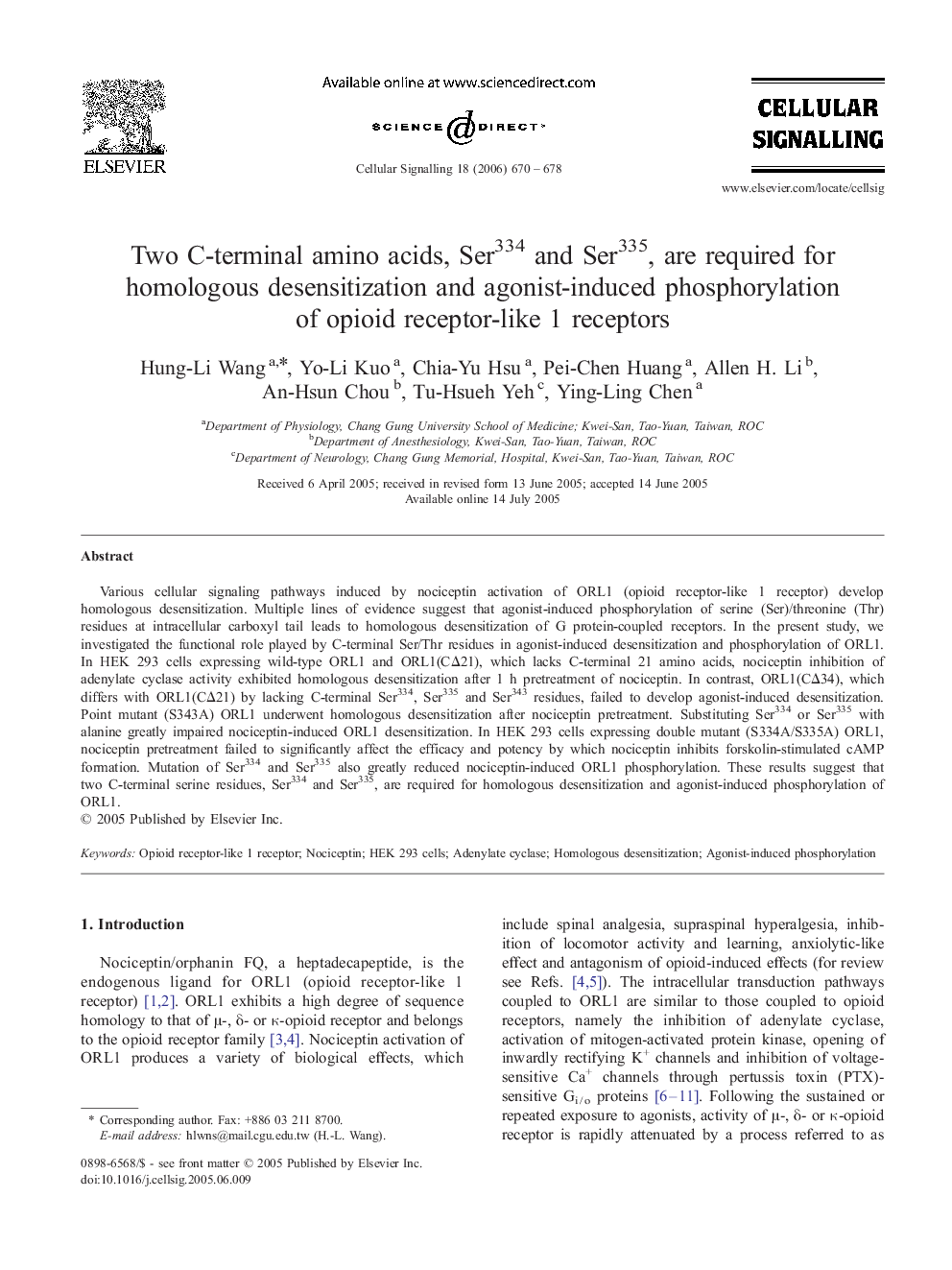| Article ID | Journal | Published Year | Pages | File Type |
|---|---|---|---|---|
| 1964594 | Cellular Signalling | 2006 | 9 Pages |
Abstract
Various cellular signaling pathways induced by nociceptin activation of ORL1 (opioid receptor-like 1 receptor) develop homologous desensitization. Multiple lines of evidence suggest that agonist-induced phosphorylation of serine (Ser)/threonine (Thr) residues at intracellular carboxyl tail leads to homologous desensitization of G protein-coupled receptors. In the present study, we investigated the functional role played by C-terminal Ser/Thr residues in agonist-induced desensitization and phosphorylation of ORL1. In HEK 293 cells expressing wild-type ORL1 and ORL1(CÎ21), which lacks C-terminal 21 amino acids, nociceptin inhibition of adenylate cyclase activity exhibited homologous desensitization after 1 h pretreatment of nociceptin. In contrast, ORL1(CÎ34), which differs with ORL1(CÎ21) by lacking C-terminal Ser334, Ser335 and Ser343 residues, failed to develop agonist-induced desensitization. Point mutant (S343A) ORL1 underwent homologous desensitization after nociceptin pretreatment. Substituting Ser334 or Ser335 with alanine greatly impaired nociceptin-induced ORL1 desensitization. In HEK 293 cells expressing double mutant (S334A/S335A) ORL1, nociceptin pretreatment failed to significantly affect the efficacy and potency by which nociceptin inhibits forskolin-stimulated cAMP formation. Mutation of Ser334 and Ser335 also greatly reduced nociceptin-induced ORL1 phosphorylation. These results suggest that two C-terminal serine residues, Ser334 and Ser335, are required for homologous desensitization and agonist-induced phosphorylation of ORL1.
Related Topics
Life Sciences
Biochemistry, Genetics and Molecular Biology
Biochemistry
Authors
Hung-Li Wang, Yo-Li Kuo, Chia-Yu Hsu, Pei-Chen Huang, Allen H. Li, An-Hsun Chou, Tu-Hsueh Yeh, Ying-Ling Chen,
